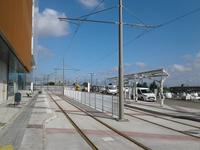
Urban marginality and resistance in contemporary fragmented cities
Short description
Cities are constantly being transformed, physically and socially due to urbanization, migration and other forms of societal changes. People may become excluded, alienated, gentrified or forcibly relocated following issues of income, ethnicity, class and territoriality. This project seeks to shed light on how heritage-led forms of urban marginality may occur when ignoring or assimilating the multiple layers of history, cultures and representations that characterise cities. The purpose is to explore the role that heritage may play in appropriating particular patterns of urban changes that can hamber efforts attempts to realise socially equal cities.
About the project
Cities are constantly being transformed, physically and socially due to modernisation, growth, migration and other forms of societal changes. Changes in urban density, proximity, mobility, temporality and diversity can result in significant impact on people’s social networks, commons and place attachment. These changes are often debated as inevitable and vital for modernisation and progress. However, several scholars explain the various forms of injustices such changes can produce. People may become excluded, alienated, segregated or violently relocated following issues of income, ethnicity, class and territoriality. This project sheds light on how heritage-led forms of urban marginality may also occur when ignoring or assimilating the multiple layers of history, cultures and representations that characterise cities, and how this can encumber any attempt to realise socially equal and sustainable cities.
The project departs from the argument that a process of ‘heritageisation’ has since the 19th century been defining our valuable past and desired future. This process favours the physical heritage, experts’ knowledge, single representation of the past, and the experiences of ruling and upper-middle classes. It is also asserted in this project that an overlooked relationship exists between urbanisation and heritageisation, and this relationship has resulted in authoritative representations of the past in urban policy discourses and documents. These arguments and assertions will be investigated in relation to the urbanisation processes in Gothenburg to uncover the role that ‘heritage’ may play in appropriating urban change and marginality, and thereby contribute to the current debates on ‘inclusive heritage’ and ‘equal and sustainable cities’.
A critical heritage approach urban change and marginality will be used to investigate: - How do urbanisation processes in places with multiple layers of history authorise specific layers at the expense of others, and thus result in “vertical” forms of marginalities? - How do urbanisation processes in places used by multi-cultural communities favour the protection of the historic traces and physical expressions of specific cultures at the expense of others, and thus cause “horizontal” forms of marginality. - How can heritage play a potential role in going beyond the traditional vertices of urban marginality––class, ethnicity, state––and expand the meaning of urbanisation towards identity, memory and place attachment? - How can rethinking “marginality” in relation to heritage offer new knowledge on “inclusion” in the making of heritage and cities?
The project contributes to current debates about “new inclusive cultural heritage policy that hold Sweden together” (Kulturdepartementet, 2016-03-22) and “Jämlikt Göteborg–Hela staden social hållbar” (Göteborgs Stad 2016). Inclusion in these debates seems to be limited to the "inclusion of people’s different perspectives on Swedish heritage” (Kulturdepartementet 2016). This project will challenge this conception by promoting new dialogues on 'heritage' as plural and open to multiple and changing claims and interpretations. This suggests a new understanding of 'inclusion' beyond assimilation and single representation. The idea is to move towards a new meaning of 'inclusion' that promotes ‘plural heritages in Sweden’, and a shift from “what does heritage mean?” to “what does it do?”. The relevance of this project exists in its capacity to enhance these shifts and help challenge the traditional divide in vision between heritage and planning practices. A trans-disciplinary approach that dwells on critical heritage, urban and resistance studies will be used to explore the overlooked relationship between heritageisation and urbanisation that helps - appropriate urban change and its associated identity contestations - explain the management of marginality as a matter of socio-political distribution and symbolic power - help see the social responses to marginality as reaction to physical displacement, to economic unaffordability, self-interest - help overlook people’s right to heritage, representation, social networks - fail any attempt to disconnect policies of urban development and heritage management from the dominant singular representations of the past - and sustain a limited capacity in these policies when addressing the impact of urban change on people’s identities and narratives.
These explorations will offer new knowledge on heritage, inclusion and marginality, and thus reveal the role heritage can play in making cities equal and sustainable. The case is the suburb Gamlestaden, located eastern of the city of Gothenburg. The built environment of Gamlestaden is situated over the ruins of Nya Lödöse (1473-1624). These ruins are currently uncovered by massive archaeological excavations that seek to integrate that history in the new development, including a new shopping centre, offices and housing. Interviews, focus group workshops, participant observation and photographic documentation, will be used to explore the impacts of the development on: the social, cultural and spatial fabrics; the multiple layers of history; today’s quality of life; and the expressions of the 1474-1624 history of Nya Lödöse and today’s multicultural Gamlestaden in the urban change.
Members
Chiara Valli
